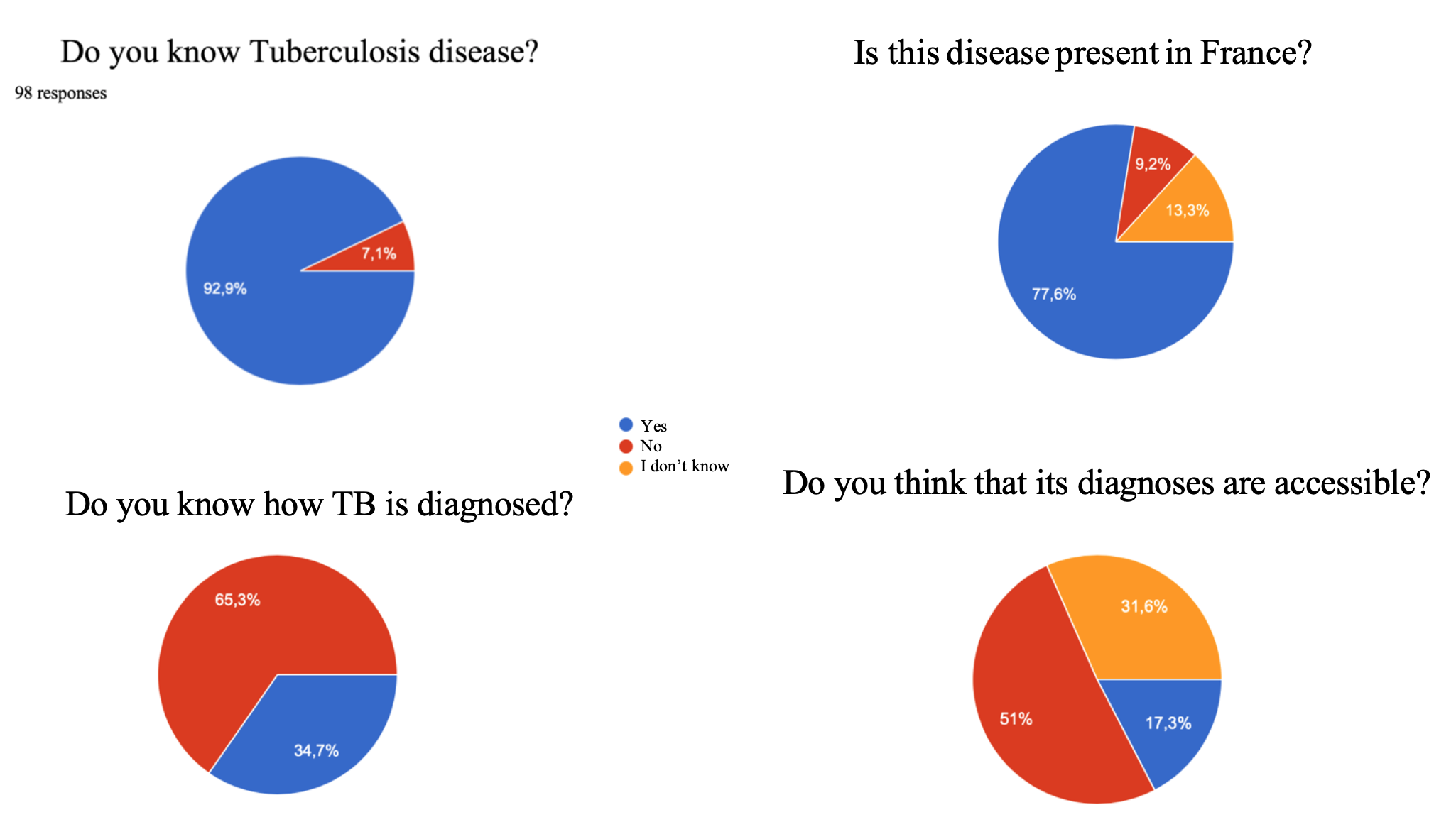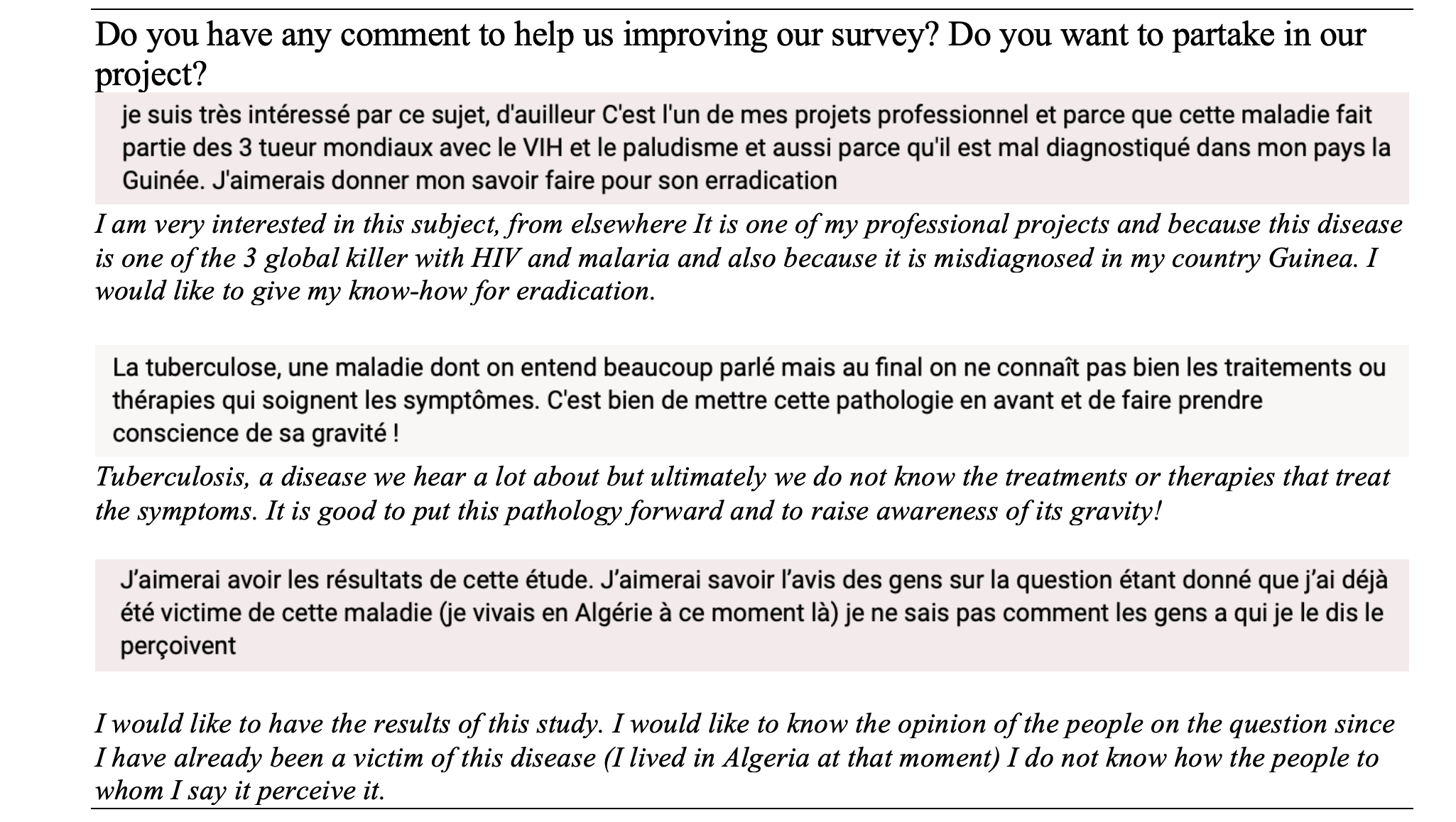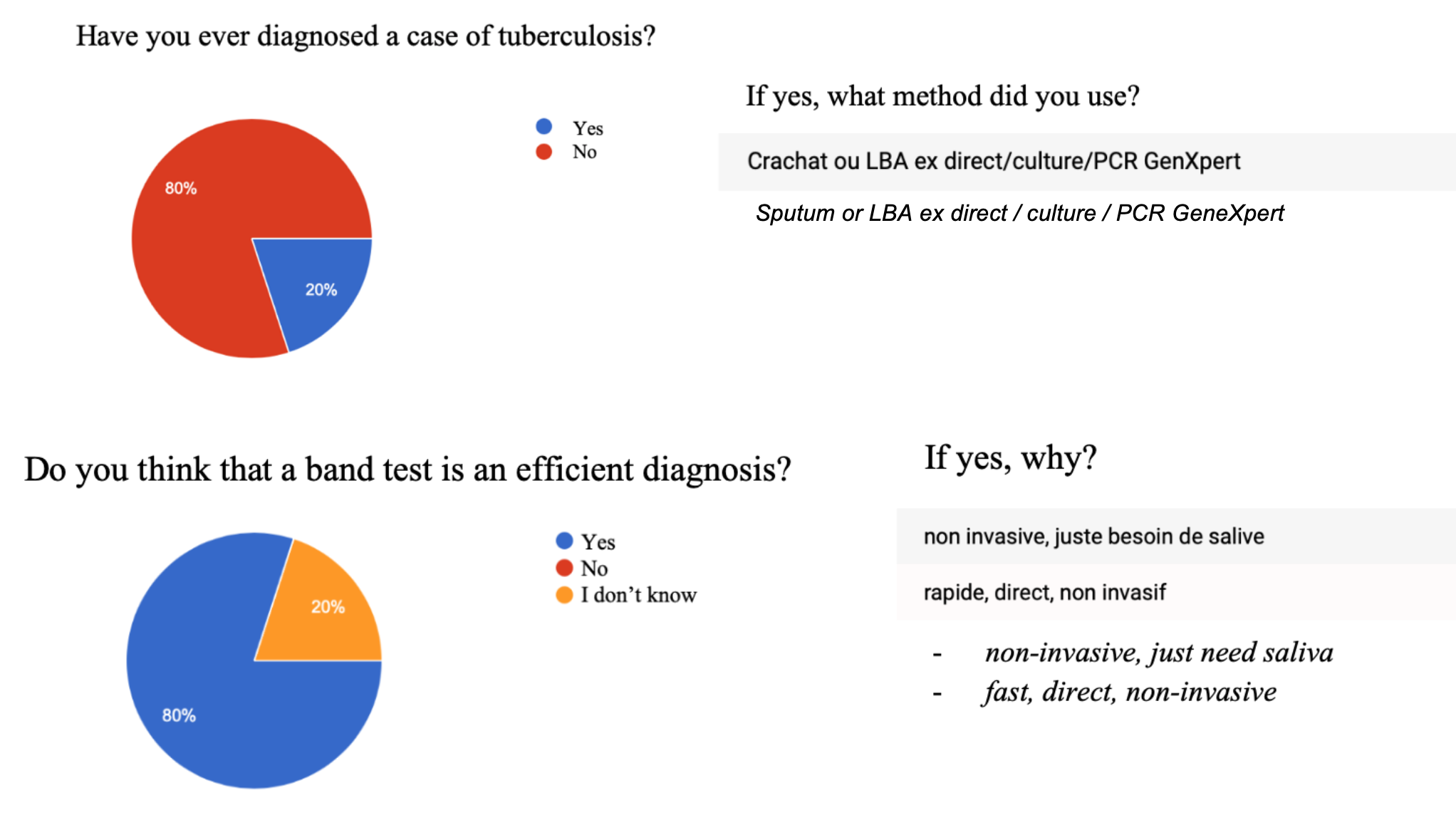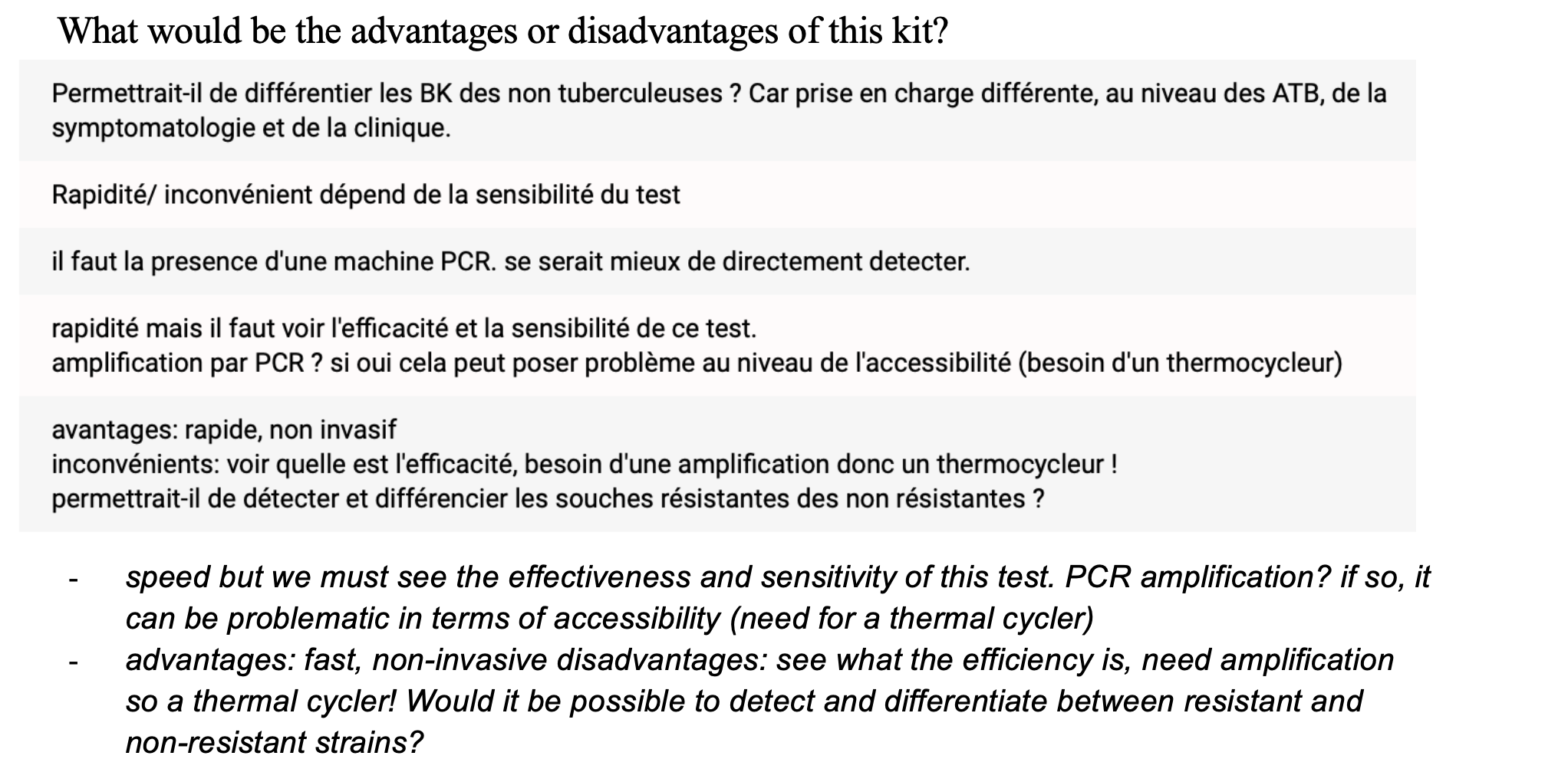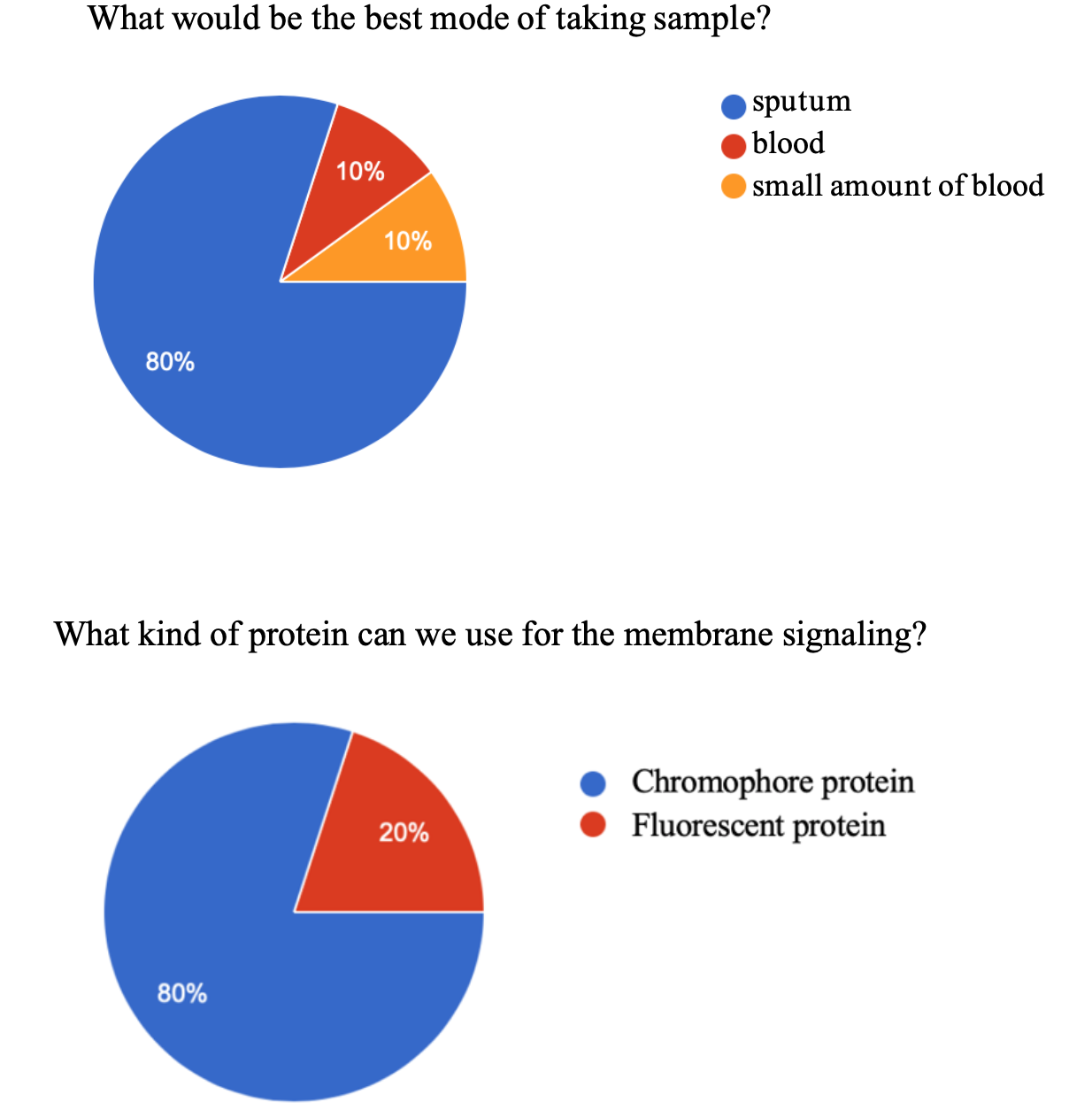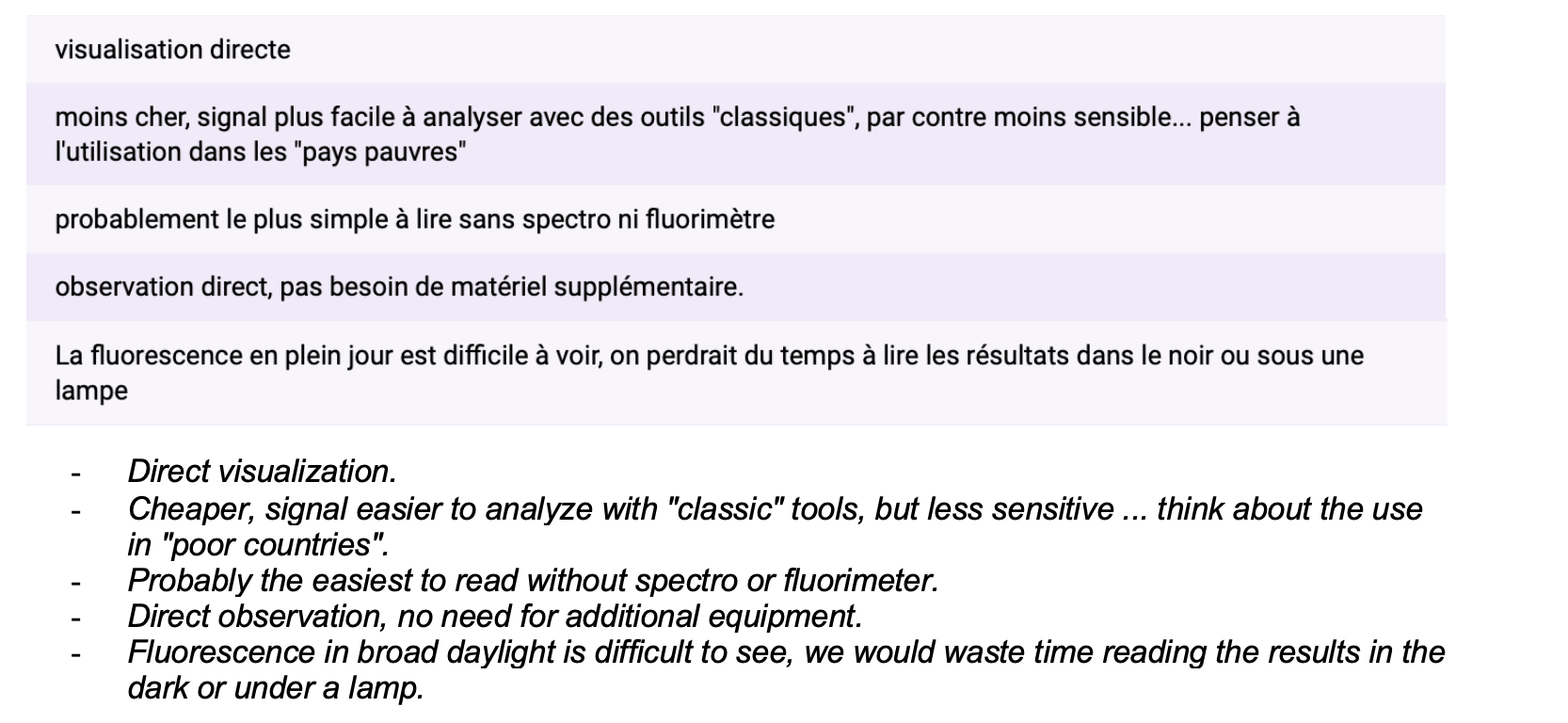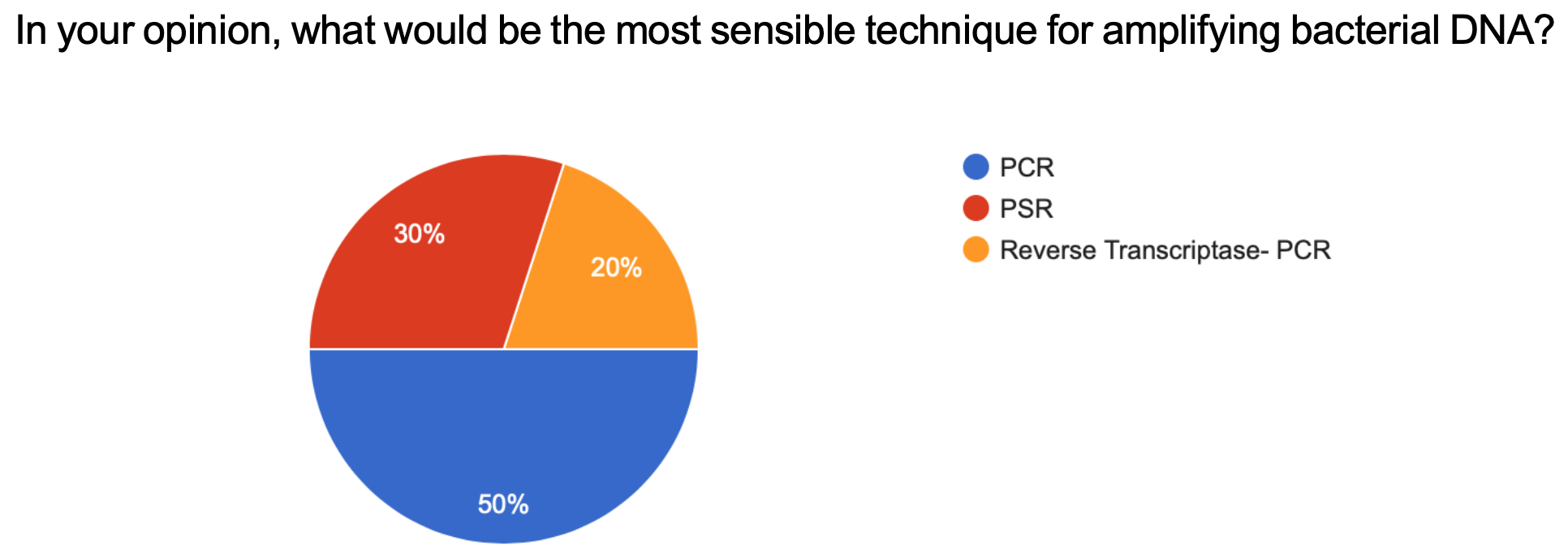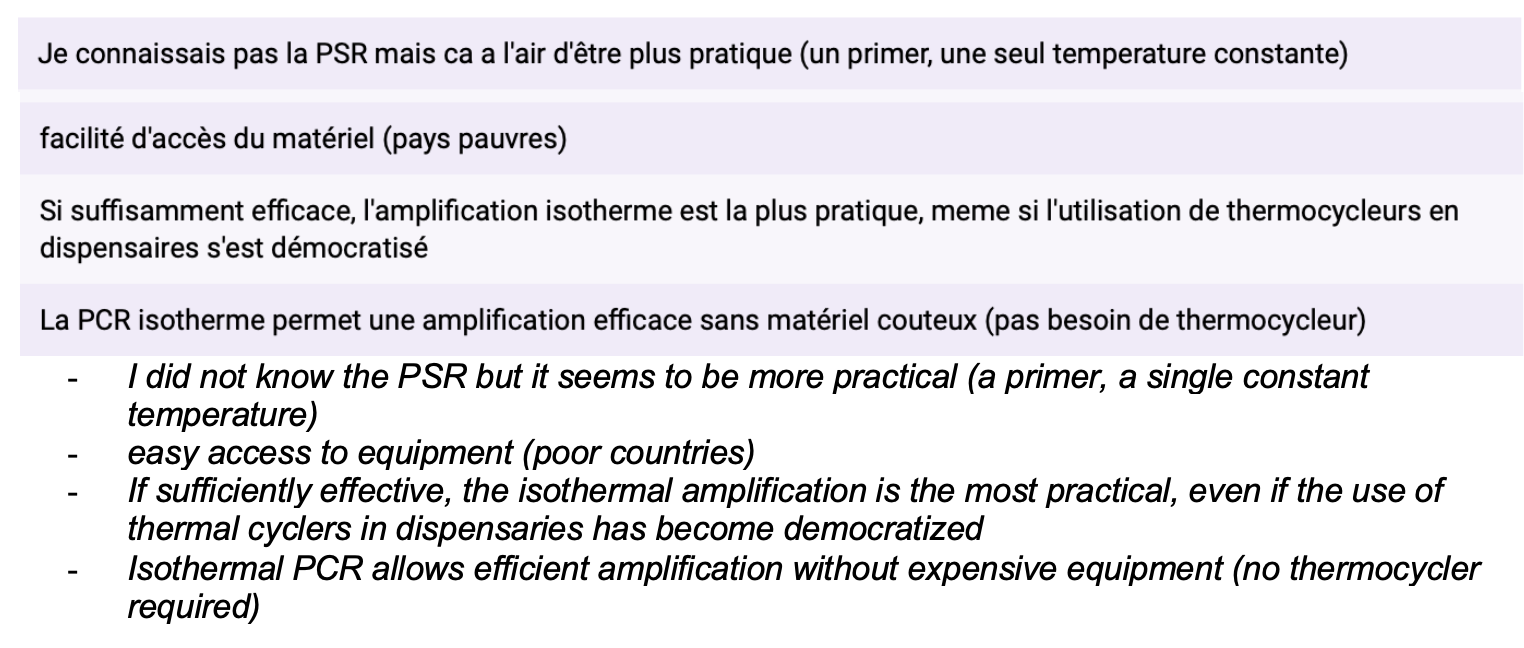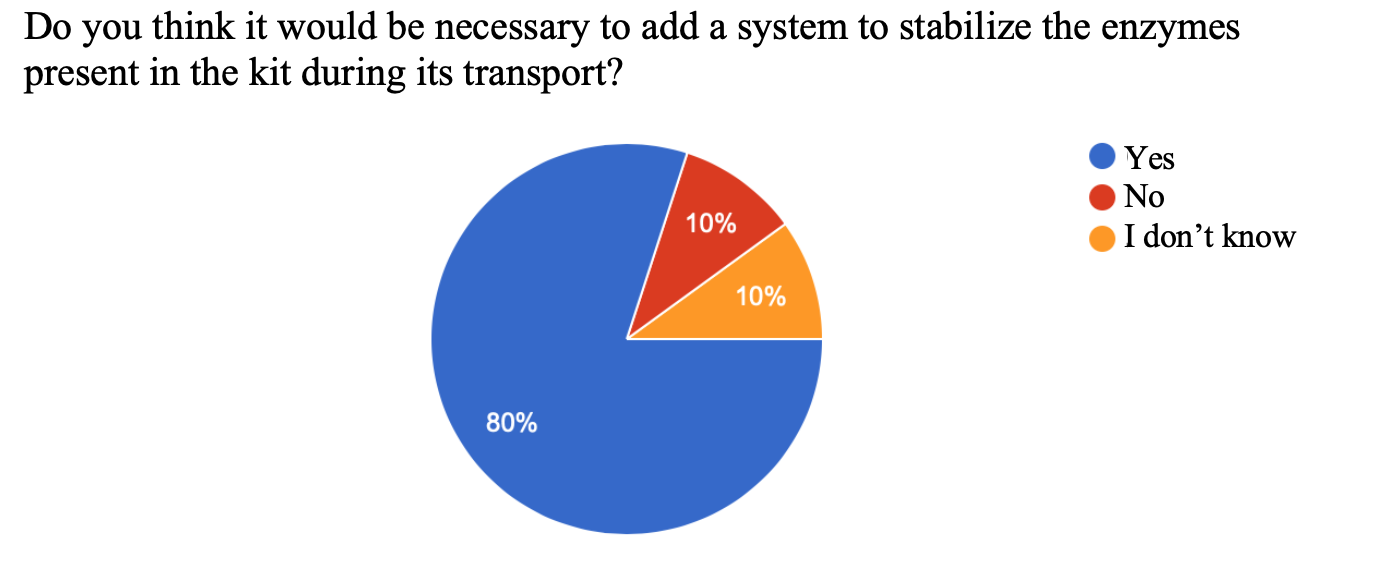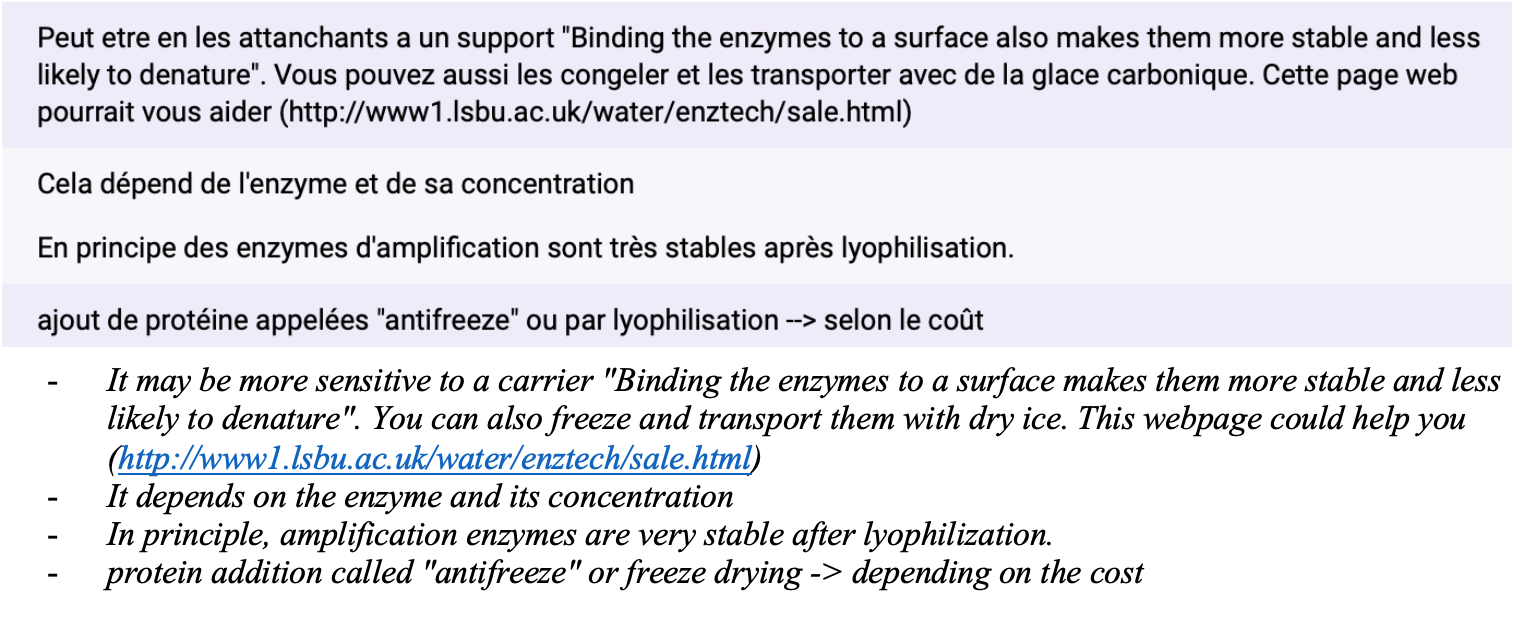Since none of the team members had worked on TB before, we had to learn more about it. Reading scientific papers and discussing with experts was a necessary as a first step, but it was not enough. We needed to know more about this disease and the way to diagnose it. That's why we chose to conduct several surveys. To ensure the widest possible audience, we conducted these surveys in both French and English. The polls were conducted in different forms:
1) directly on our stands during events
2) Google forms shared on social networks and emails
3) the iGEM team in Thessaly.
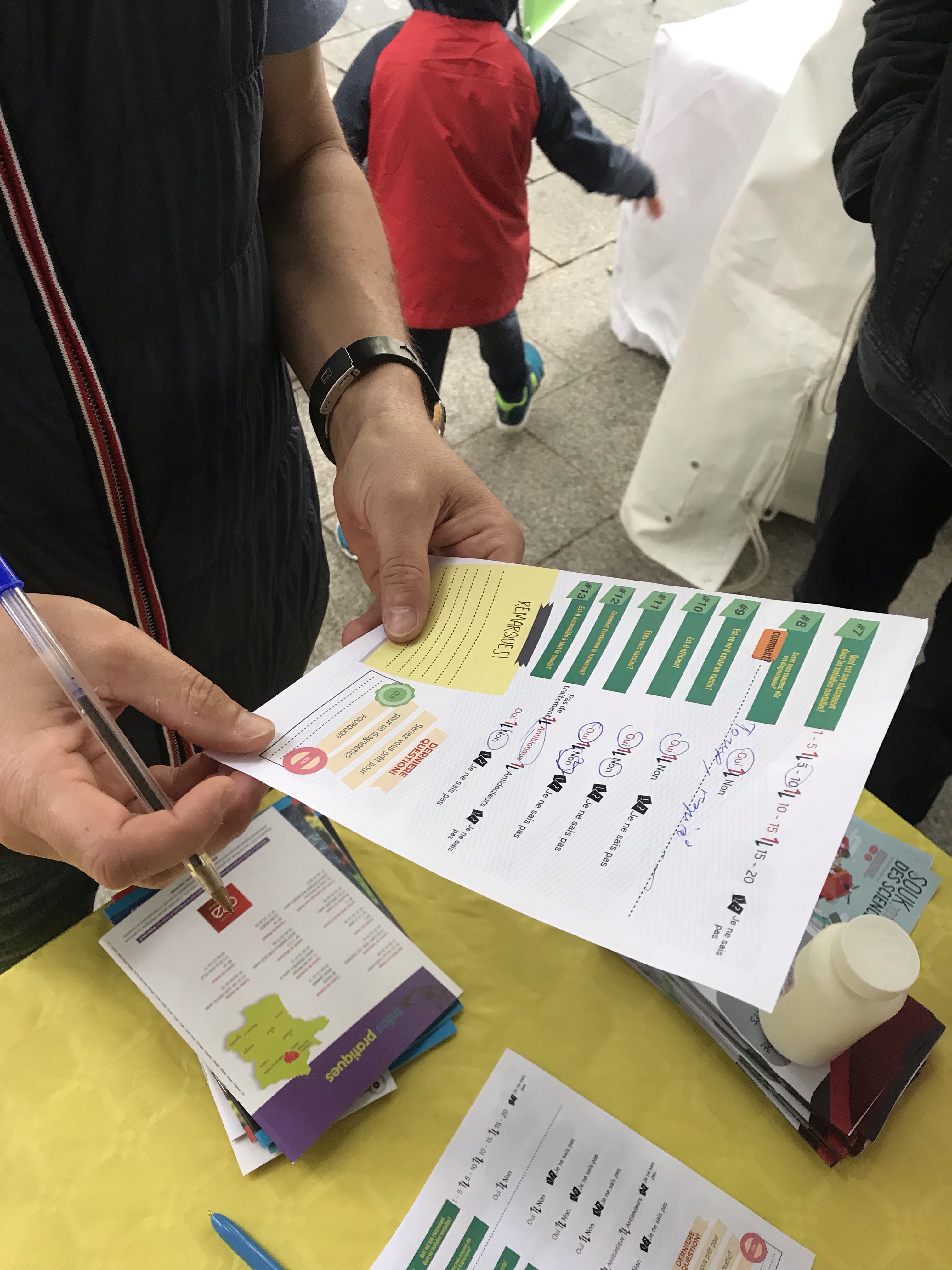
The first survey was targeting a general public in order to discover what people know about the disease, its diagnose/treatments, and healthcare's accessibility. Given that most of us are students, a large proportion of the answers come from students. However some of our teachers answered to the survey and thus, might skew the answers. This criterion therefore had to be taken into account. In total, for this survey, we obtained 98 responses. Here are represented the questions/answers obtained revealing the general public's knowledge :
According to these graphs, at a barely minimun, people knew the disease by name. However, many do not know how this disease is diagnosed but are aware of the accessibility problem (51% of responses). Based on the different answers, people want to know more about the disease and how to treat it.
After some precisions, we decided to reorientate our surveys to professionals. As a first step, a survey for physicians allowed us to understand the problems of current diagnostic methods, as well as their advice and guidance on our idea of designing a new kit. In this survey, we asked the physicians if they had ever diagnosed or treated patients with TB. This survey was used to see what the problems were encountered in the diagnosis and their opinion on our idea of a tape test from saliva. Then, we asked them what would be the advantages and disadvantages of our method. The most relevant results are shown in the graphs below:
With the results and remarks obtained from this survey, some questions arose. Indeed, some profesionnals asked us if it would be possible to detect the latent form of the disease but also to differentiate the resistant bacteria of the non-resistant ones. It has also been shown that the PCR amplification could be a problem. That is why we ask biologists, by a third survey, ways to address these concerns. This survey was based on techniques to use in our kit:
As the majority of responses were for the chromophore protein, we looked at why this type of protein would be the most suitable according to biologists.
According to these answers, we decided to use the chromoproteins as a detection signal. Indeed, this type of protein allows to directly visualize the signal, without any material or tool.
Although most advised us to use PCR in order to amplify bacterial DNA, the arguments for PSR showed that this technique would be more suitable for our project. Indeed, as it has been indicated, the PSR allows isothermal amplification, thus making it possible to amplify the DNA without thermocycler. This technique would allow us to increase the accessibility of this method. Moreover, an amplification by PSR is faster (1 hour on average).
Finally, a last point was addressed. As this kit is intended for developing countries, it will have to be transported. We wanted to know if it is necessary to develop a stabilization system for the enzymes present in the magic mix. It turned out that 80% of people said they were in favor of this idea. Conservation advice has been obtained:
In order to use synthetic biology, we decided to produce antifreeze protein in order to preserve our Magic Mix. Lyophilization seems to be also a good way of preserving enzymes. However, it would be necessary to look at the efficiency and cost of both methods in order to choose the most suitable technique for our kit.
Moreover, some physicians ask us if it would be possible to detect the resistant bacteria at the same time. That is why we asked about it to the biologists. We obtained only two answer about it:
In order to do that, we wanted to design a protein (Tal3) capable to recognize the mutation allowing the bacteria to be resistant. To design this protein, we've been searching in articles to know which kind of genes are usually mutated leading to the resistance. We found that the mutation in the rpoB gene is often responsible for this resistance. This is why we designed a Tal capable to recognize the mutation of this gene. Thus, thanks to this protein, it is possible to diagnose a patient very precisely, allowing appropriate care.
Finally, thanks to this survey, we have chosen different technics to integrate in our project, like the PSR, and also the design several proteins (Tal, chromoproteins , antifreeze protein). These surveys allow us to design and develop an efficient, accessible, cheap and precise diagnostic kit.



